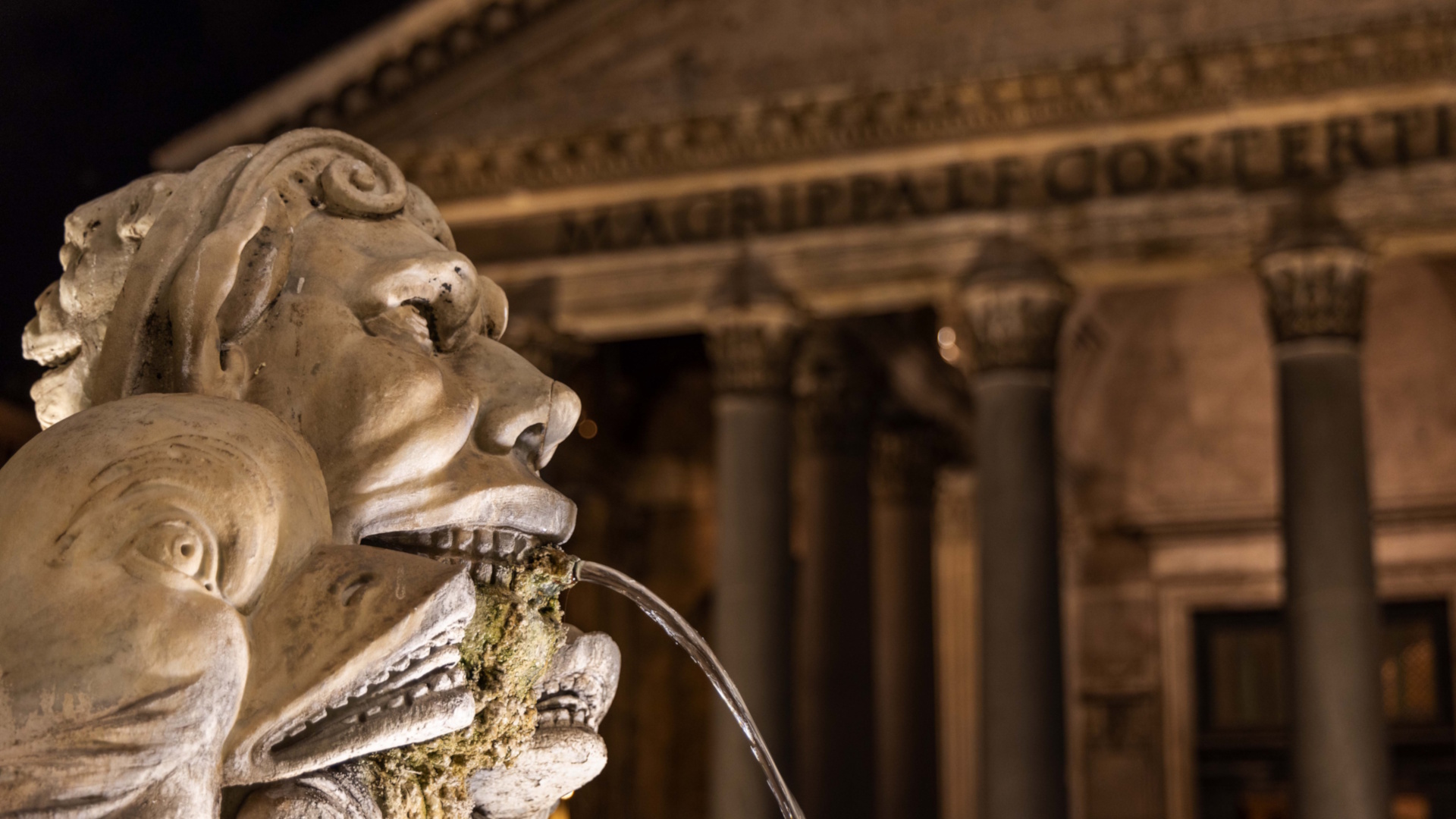
The voice of the city’s identity and culture: today, “Romanesco” is generally considered more of a regional idiom – with a very specific tonality and a large lexical heritage – than a true language. In the past, it reached high literature with poets such as Giuseppe Gioacchino Belli and Trilussa and it’s partly thanks to them if it has preserved its originality and a certain ability to renew itself.
To discover its amazing richness and its vivid and lively expressions, we present you seven phrases that will virtually accompany us around the city: famous, little known or still used, they are all “typically Roman” both for their frankness and the pungent and irreverent irony, both for their source of inspiration – that is, city places, monuments and events that have gone down in history.
#1 “Il giro di Peppe”, Peppe’s tour
Taking Peppe’s tour means wasting our time, lengthening a journey, or a reasoning, which could be shorter. This useless roundabout, however, brings us in front of one of Rome’s many wonders, that masterpiece of architecture and engineering that from the Middle Ages the Romans began calling the Rotonda or “Ritonna” – the Pantheon. The expression was perhaps originally linked to the flight into Egypt of Joseph and Mary, but it was revived and colored at the end of the 19th century, becoming in one of its versions “Er giro de Peppe attorno alla Ritonna appresso alla Reale”, Peppe’s tour around the Pantheon following the Reale. A common nickname for Giuseppe, the Peppe mentioned in the saying would be the hero of the two worlds Garibaldi. In 1878, when king Victor Emmanuel II died, the funeral procession accompanying the coffin (the Reale) went twice around the Pantheon to let people give a final salute to the king as per tradition. While all the authorities waited at the entrance of the monument, where the king was to be buried, Garibaldi allegedly followed the procession all around the Pantheon, thus walking a much longer way than necessary.
#2 “La lupa del Campidoglio”, the Capitoline She-wolf
“Me pari la lupa del Campidojo”, you look like the Capitoline She-wolf: who lives in Rome knows that we are talking about a restless soul, who cannot find peace and sit still. Emblem of Rome since its arrival at the Capitoline Hill in 1471, when it was donated by Pope Sixtus IV together with the other magnificent sculptures that would become the first nucleus of the Capitoline Museums, the Capitoline She-wolf is the most recognizable city symbol. At the origin of the saying, however, there is a living animal and a sad tradition that began at the end of the 19th century: in 1872, two years after the breach of Porta Pia, the then mayor of Rome ordered to place a cage with a wolf at the slopes of the Capitoline Hill, which soon became an attraction for the Romans. The exhibition of the poor animal went on for a long time and the she-wolf continued to live on the hill for decades, walking back and forth through the narrow cage. Thus, with their notorious bitter irony, the Romans eternalized that infinite movement in a saying that immediately became famous, remaining part of the popular imagination even after the she-wolf finally found freedom from the beginning of the seventies.
#3 “Masses at San Gregorio”
Dominating the square of the same name in the Rione Celio, at the top of a beautiful staircase, the church of San Gregorio is an elegant example of the Roman art in the 17th century but its history had begun ten centuries earlier, when Gregory – later elected pope in 590 AD and gone down in history as Gregory the Great – transformed his family home into a monastery. At the bottom of the right aisle of the church, we can still see the sleeping-place or “Lettuccio” of the saint, a small room where St. Gregory used to rest lying on a stone. But among the particularities of the church, highly revered by the Romans for its importance and antiquity, there is also one that allegedly gave birth to a saying sometimes also used as a proverb. In ancient times, the church had been granted the privilege of celebrating mass one hour after noon, offering even latecomers a last chance to attend the ecclesiastical function. But luck, as we all know, has the peculiar habit of changing. So, when the free ride is over and there is nothing else to do, in Rome you might still hear people saying: “So’ finite le messe a San Gregorio”, masses at San Gregorio are over!
#4 “Nonno in carriola”, grandfather in a wheelbarrow
“E de tu’ nonno ‘n cariola!” is a typical idiom used to respond to or reinforce the most classic Roman swear words, with multiple meanings depending on the tone and expression of the person pronouncing it: anger and indignation but also wonder, admiration, surprise... But what does the grandfather have to do with it? Although still used today, the exclamation dates back to ancient times and is linked to the city’s historic hospitals. On the left bank of the Tiber, a few steps from St. Peter’s basilica, the monumental complex of the Santo Spirito took care of the sick around the city since 1200. But when the beds were not enough, for example in the case of an epidemic, in the huge Sistine Hall of the hospital the supernumerary patients – often elderly people – were placed in precarious conditions in the center of the ward, sitting on a kind of uncomfortable armchair, a wheelbarrow or “cariola” in Roman dialect. The sad position of the patient in “cariola” can still be seen today in a plaque near the church of Santa Maria Portae Paradisi, in via di Ripetta, right next to another historic hospital, that of San Giacomo degli Incurabili.
#5 “Per la Lungara”, along the Lungara street
An ancient route goes from the Settimiana Gate of the Aurelian Walls to the Vatican: transformed into a true urban axis under Pope Alexander IV Borgia and definitively settled by Julius II, in conjunction with the opening of Via Giulia on the opposite bank of the Tiber, in the 16th century the long straight street in the Rione Trastevere was almost a city within the city, adorned with gardens and luxurious residences, such as the wonderful Villa Farnesina. The name by which the street was known, however, often changed over the centuries: from “Sub Jano”, because it is dominated by the Janiculum Hill, to “Via Sancta” for the traffic of pilgrims and, for a certain period, also to “Via Giulia”. The definitive name of Lungara (or Longara) derives from the early medieval Latin and indicates a strip of land parallel to a watercourse, much longer than it is wide. The street was undoubtedly beautiful but it was its length, and the discomfort in following it, what struck the popular imagination giving rise to one of the many sayings of the Roman dialect: “Annà pe’ la Longara”, going along the Lungara Street, or being forced to take, due to lack of means, a long and uncomfortable road to reach one’s goal.
#6 “Porta Cavalleggeri”
To get a hard fall by aiming too high, in other words “Mettese in testa Porta Cavalleggeri”. Let’s start by saying that the ancient Porta Turrionis, renamed Cavalleggeri in 1500, no longer exists today: it was one of the gates of Leonine Walls – to the left of the Colonnade encompassing St. Peter’s square and on the opposite side from Porta Angelica and the Passetto di Borgo – but it was demolished in 1904 to enlarge the Piazza del Sant’Uffizio. With its poisonous irony, the saying refers, however, to a precise date: the failed French assault of 30 April 1849. During the Roman Republic, Napoleon III sent an expeditionary force commanded by General Oudinot to Rome to conquer the city and return it to the pope. Oudinot was convinced he would not encounter resistance and headed with his troops towards the gate. After a day of fighting, the men led by Colonel Luigi Masi and the mobile columns of Garibaldi and Galletti, however, put the French army to rout, leaving more than 500 dead and 365 prisoners on the field. It goes without saying that for the Romans the episode became the symbol of the most vain presumption.
#7 “Marc’Aurelio”, Marcus Aurelius
The bas-reliefs of the column in Piazza Colonna celebrate his triumphs but in Rome, before an emperor, Marcus Aurelius is first of all the Marc’Aurelio or Marcurelio, the equestrian statue that was placed in the center of the Piazza del Campidoglio on Michelangelo’s advice. The statue passed unscathed through the dark ages because it was believed that it actually represented Constantine, the first Christian Emperor. Traces of the gold gilding on the bronze can be seen here and there but Romans believed it was the opposite, that the statue hid a huge amount of gold that the weather would sooner or later bring to light. A treasure, in short, but with a terrible downside: according to a widespread legend, one day the statue will return to being entirely golden and the little owl between the horse’s ears – actually the quiff of its mane – will start singing, announcing the end of the world. The legend gave rise to the saying “Scoprì in oro come Marcurelio”, to be covered in gold like Marcus Aurelius or being at the end. A second saying has instead a completely different meaning: “Se sta scoprenno in oro come er cavallo de Marc’Urelio”, turning to gold like Marcus Aurelius’ horse, can be used for someone who suddenly shows his true colors.
The Pantheon
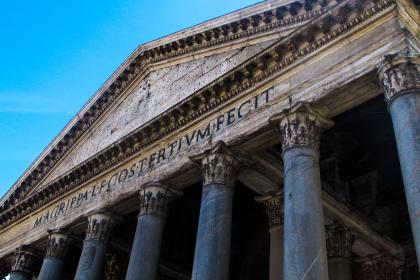
 Condividi
Condividi
The Capitoline museums
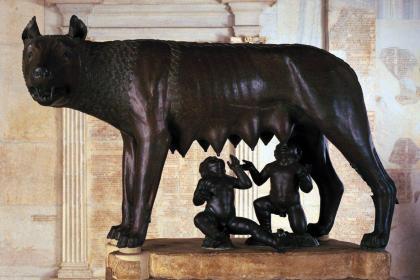
 Condividi
Condividi
Porta Pia and the Museo Storico dei Bersaglieri
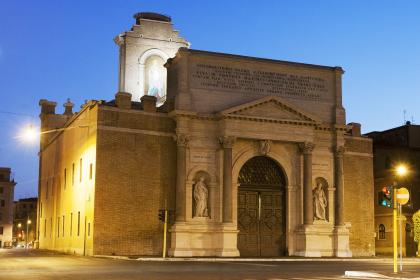
 Condividi
Condividi
Church of San Gregorio al Celio and Oratories of Sant'Andrea, Santa Silvia and Santa Barbara
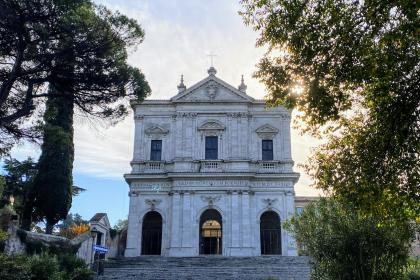
 Condividi
Condividi
Monumental Complex of Santo Spirito in Sassia
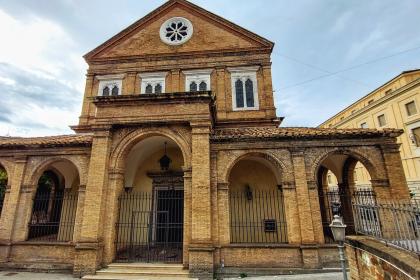
 Condividi
Condividi
Porta Settimiana
 Condividi
Condividi
The Aurelian Walls
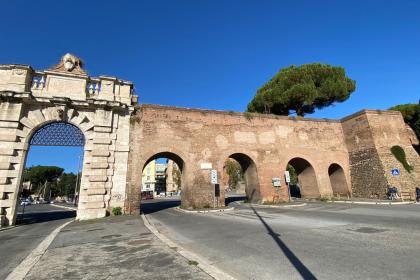
 Condividi
Condividi
Villa Farnesina
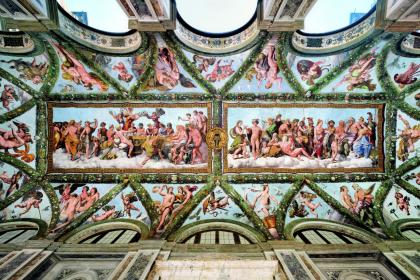
 Condividi
Condividi
Saint Peter’s Square
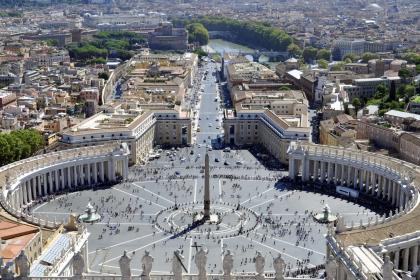
 Condividi
Condividi
The Passetto di Borgo
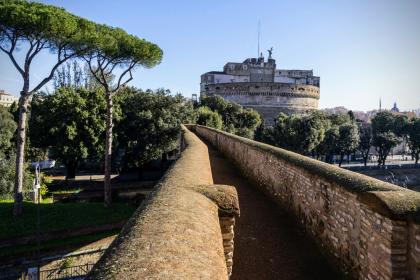
 Condividi
Condividi
Piazza Colonna
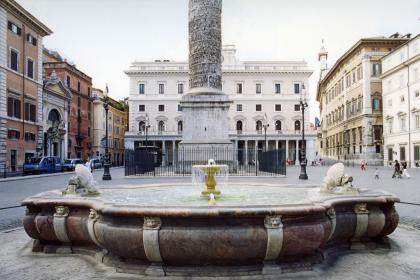
 Condividi
Condividi
The Column of Marcus Aurelius (Antonine)
 Condividi
Condividi











































